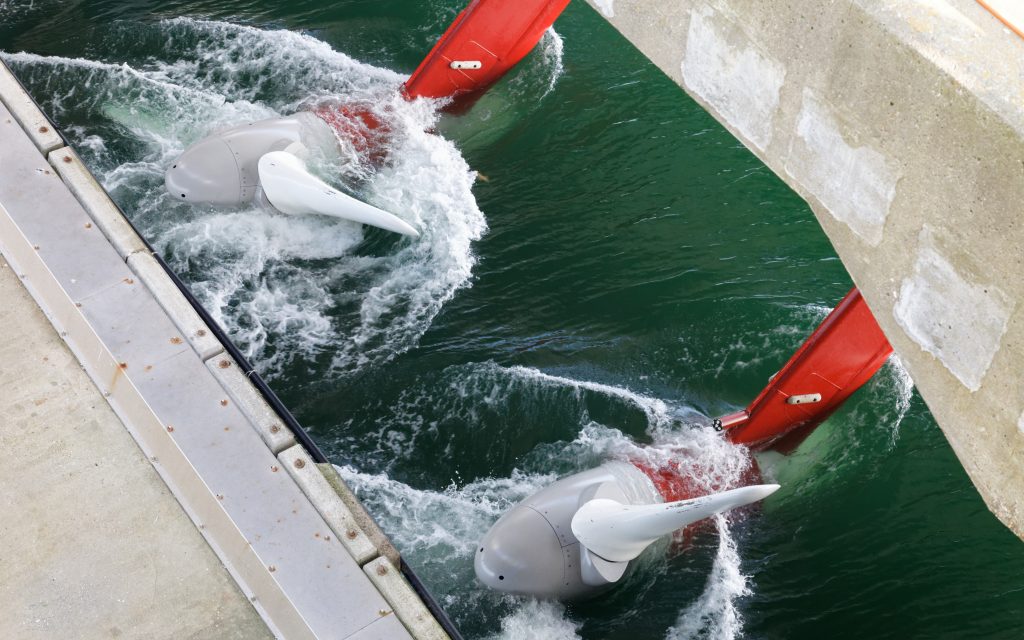If the spectacular Roman aqueducts that still dot the landscape of Europe tell us anything, it’s that hydraulic engineering is nothing new. For thousands of years water power has been used to grind wheat, saw wood, and even tell the time.

Craigside in Northumberland
By the 19th century, water was able to go beyond performing rudimentary mechanical tasks and generate electricity directly. Cragside in Northumberland, England became the first house powered entirely by hydroelectricity in 1878. By 1881, the whole town of Niagara Falls on the US-Canada border was being powered by the force of its eponymous river and waterfall.
Hydropower has many advantages: it’s predictable, consistent, often zero or low carbon and it can provide a range of ancillary services to power transmission systems. In Great Britain, there is 1.7 gigawatts (GW) of installed hydropower and another 2.8 GW of pumped hydro storage capacity, but it remains a small part of the overall electricity mix. In the fourth quarter of 2018, the 65% of British hydropower that is connected to the national grid accounted for less than one per cent electricity generation or 545,600 megawatt hours (MWh). By contrast, wind accounted for 14% of total generation that quarter (almost 9.5 million MWh).
While hydropower projects can be expensive to construct, operational and maintenance costs are relatively low and they can run for an extremely long time – the Lanark Hydro Electric Scheme in Scotland, which Drax recently acquired, has been producing power since 1927.
Today, hydropower installations are found at all scales, all around the world. But the term hydropower covers many different types of facility. These are some of the ways water is used to generate electricity.
Impoundment power plants
The simplest and most recognisable form of hydropower, impoundment facilities, work by creating a reservoir of trapped water behind a dam that is then selectively released, the water flows through a turbine, spinning it, which in turn activates a generator to produce electricity.
From the Hoover Dam on the Nevada-Arizona border, to the Three Gorges Dam in China – the world’s largest power station of any type, with a generating capacity of 22.5 GW – impoundment dams are some of the most iconic structures in modern engineering.
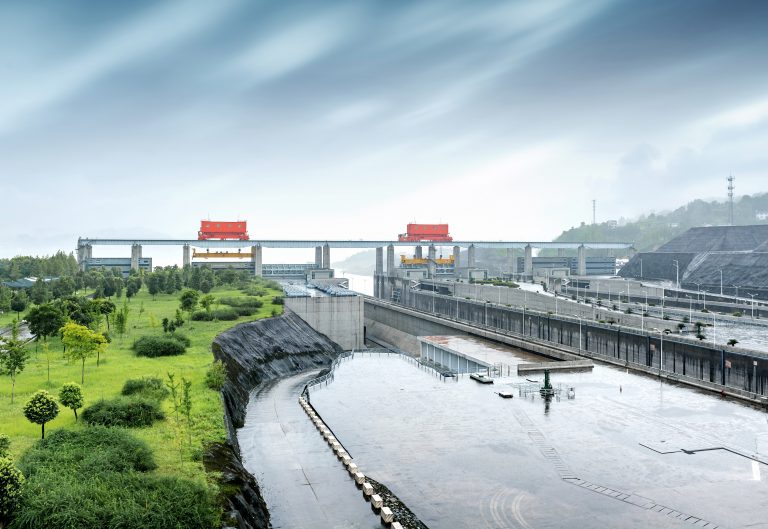
Three Gorges Dam, China
As well as having the potential to provide large quantities of baseload power, they can react extremely quickly to grid demands – just by opening or closing their floodgates as the power system operator requires.
Run-of-river generation
Rather than storing and releasing power from behind a dam, run-of-the-river generators channel off part of a river and use its natural flow to generate power.

Tongland Power Station, Galloway Hydro Scheme
Because it doesn’t require large dams or reservoirs, run-of-river can be less environmentally disruptive, as there is not always a need for large scale construction and flooding is less common.
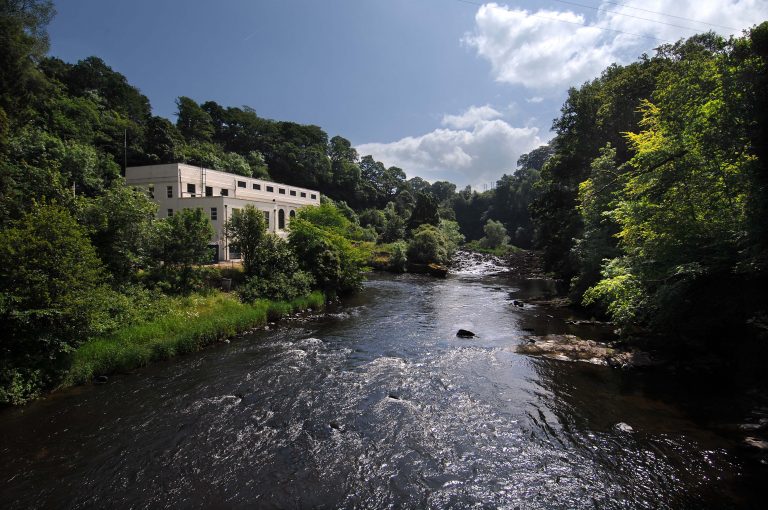
Stonebyres Power Station, Lanark Hydro Scheme
While run-of-river facilities tend to be smaller and less flexible than impoundment, they still have significant generating potential – the Jirau hydro-electric power plant on the Madeira river in Brazil has a generating capacity of 3.7 GW.
Pumped storage
Water can also be good for storing energy that can then be converted to electricity. Pumped hydro storage facilities operate by pumping water uphill to a reservoir when electricity is cheap or plentiful, then letting it flow back downhill through tunnels to a series of turbines that activate generators to generate electricity (in the same way as an impoundment dam) when electricity is in high demand.
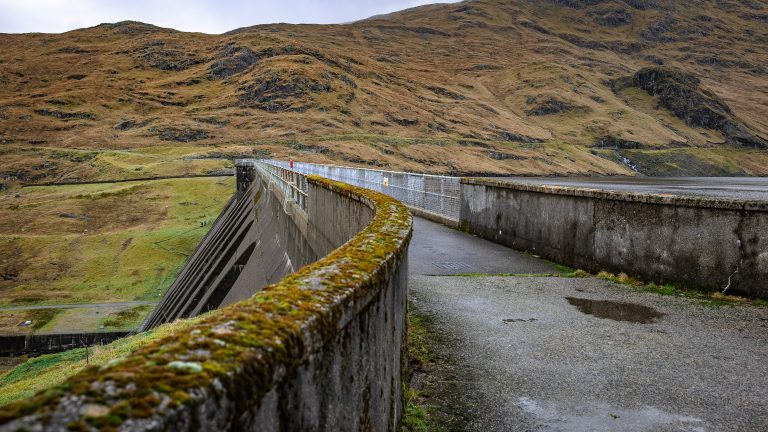
Dam and reservoir, Cruachan Power Station
Their ability to both produce and absorb electricity makes them a vital part of electricity networks, playing the role of energy storage systems. In fact, a massive 97% of all global grid storage capacity is in the form of pumped hydro. Their function as giant batteries will only become more important as intermittent renewable sources like wind and solar become more prevalent in the energy mix.
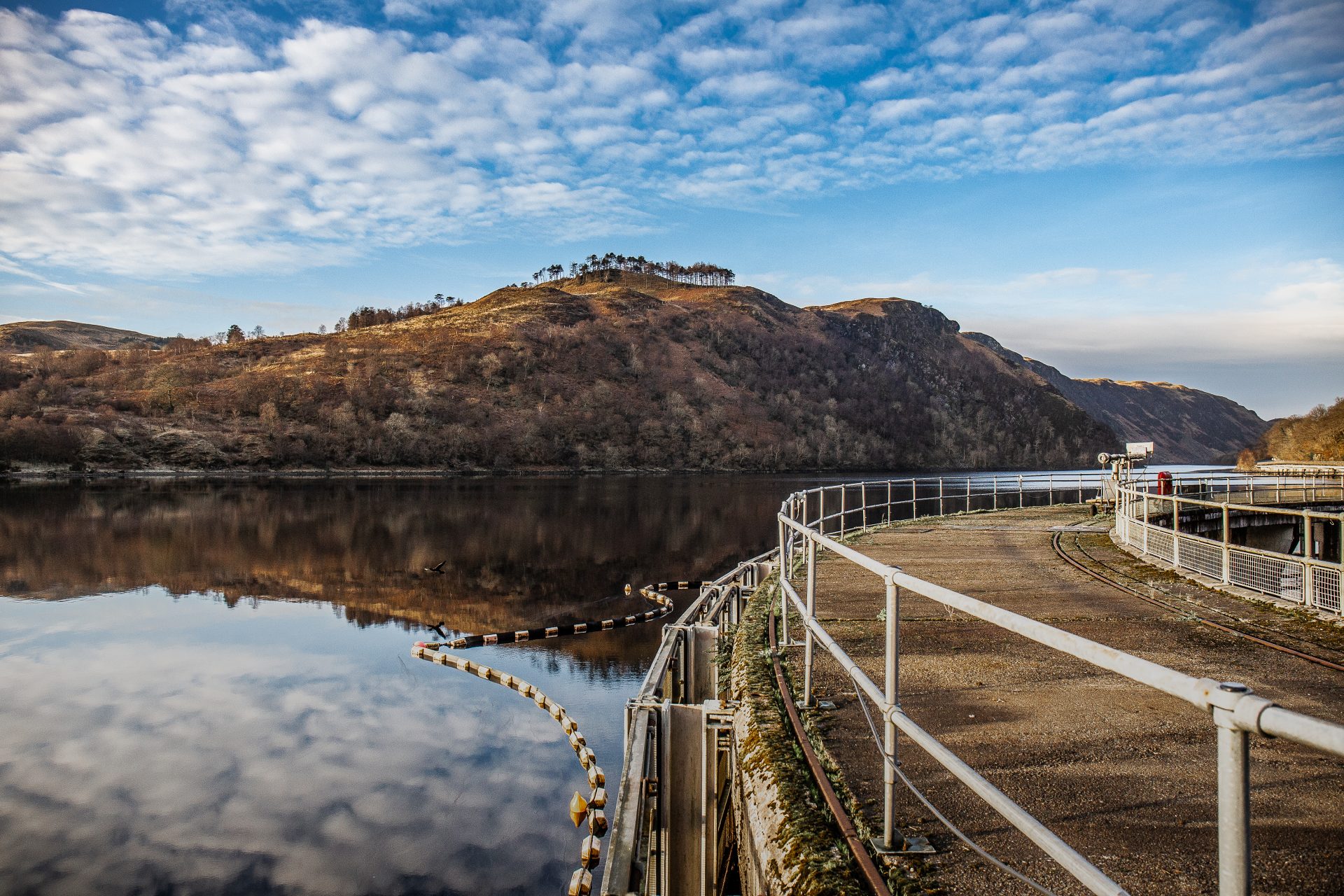
Outlet and loch, Cruachan Power Station.
So too will their ability to ramp up generation very quickly. Drax’s recently acquired Cruachan Power Station in Scotland can go from zero to 100 MW or more in less than 30 seconds when generation is called upon – for example, when there is a sudden spike in demand.
Tidal range generation
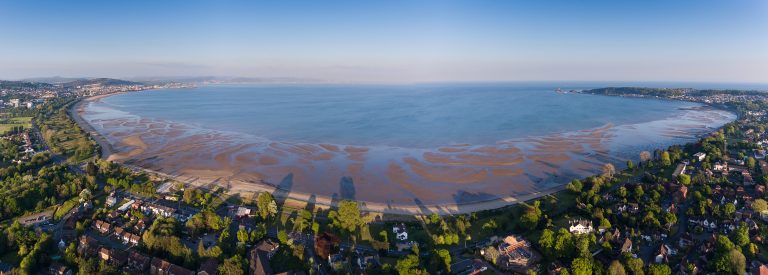
Swansea Bay
The sea is also an enormous source of potential hydropower. Tidal range generation facilities exploit the movement of water levels between and high and low tide to generate electricity. Tidal dams trap water in bays or estuaries at high tide, creating lagoons. The dam then releases the water as the rest of the tide lowers, allowing it to pass through turbines, generating power.
There are limitations – like wind and solar’s dependence on the wind blowing and the level of sunlight, operators can’t control when tides go in or out. But its vast generating potential means that it could be a valuable source of baseload power if it were to be deployed more widely.
Great Britain in particular has major opportunities for tidal generation. The Severn Estuary between England and Wales has the second highest tidal range in the world (15 metres), and a barrage built across the estuary could have a generating capacity of up to 8.6 GW – enough to meet 6% of the Britain’s total electricity demands. Some environmental groups worry about the impact such projects could have on wildlife.
Due to the level of public funding required, the government rejected that plan in 2010, in favour of pursuing its nuclear policy. A second attempt at securing a government-backed investment contract, known as a CfD, for a smaller 320 MW ‘pathfinder’ project in Swansea Bay was also rejected, in 2018. The Welsh government is however supportive of the project, which already has planning permission.
Tidal stream generation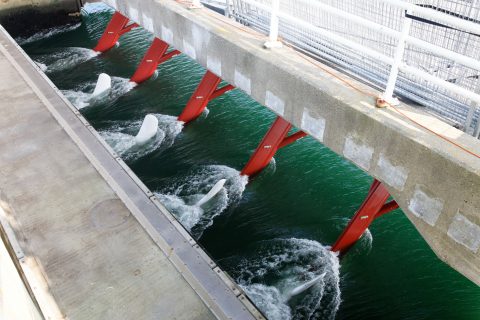
Rather than building a dam, tidal stream generators work like underwater wind turbines. Sturdy propellers or hydrofoils (wing-like blades which oscillate up and down rather than spinning around) are positioned underwater to transform the energy of tidal streams into electricity.
While tidal streams move far slower than wind, the high density of water compared to air means that more power is generated, even at much lower velocities.
Not reliant on large physical structures, tidal stream generators are a relatively cheap form of hydropower to deploy, and make a much smaller impact on their environment than tidal barrages.
Wave generation
Unlike tidal power, which is generated by the gravitational effects of the sun and moon on the Earth’s oceans, wave power ultimately comes from the winds that whip up the ocean’s surface.
There are a number of different methods that turn waves into generation, including funnelling waves into a tube floating on the surface of the water that contains electricity-generating turbines, or by using the vertical bobbing movement of a tethered buoy to pull and spin a fixed generator.
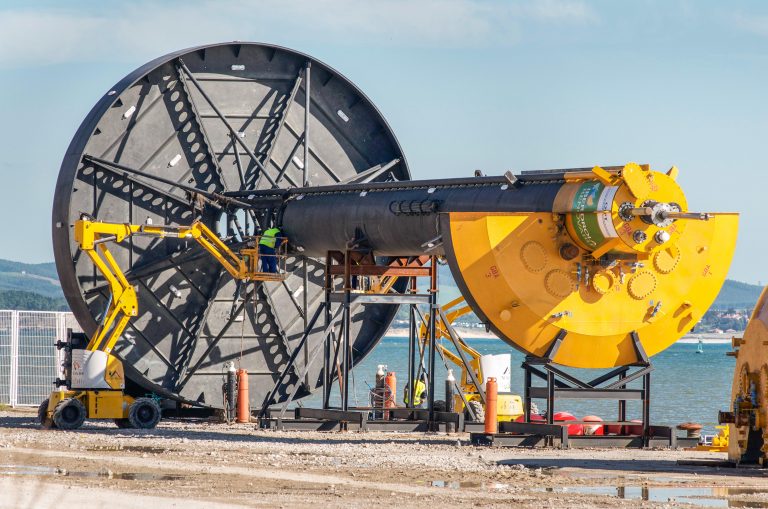
An electricity-generating buoy awaiting installation in Spain
Wave power has yet to be widely implemented, but it has significant potential. It’s estimated that the waves off the coasts of the USA could have provided 66% of the country’s electricity generation needs in 2017 alone. Effectively commercialising wave power could provide another vital tool in developing a sustainable energy landscape for the coming future.
Tidal and wave power generation are less established generation technologies than their land-based cousins but they hold huge potential in delivering more sources of reliable, zero emissions electricity for energy systems in coastal locations around the world.








